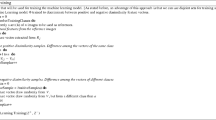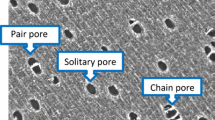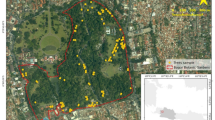Abstract
Forest species can be taxonomically divided into groups, genera, and families. This is very important for an automatic forest species classification system, in order to avoid possible confusion between species belonging to two different groups, genera, or families. A common problem that researchers in this field very often face is the lack of a representative database to perform their experiments. To the best of our knowledge, the experiments reported in the literature consider only small datasets containing few species. To overcome this difficulty, we introduce a new database of forest species in this work, which is composed of 2,240 microscopic images from 112 different species belonging to 2 groups (Hardwoods and Softwoods), 85 genera, and 30 families. To gain better insight into this dataset, we test three different feature sets, along with three different classifiers. Two experiments were performed. In the first, the classifiers were trained to discriminate between Hardwoods and Softwoods, and in the second, they were trained to discriminate among the 112 species. A comprehensive set of experiments shows that the tuple Support Vector Machine (SVM) and Local Binary Pattern (LBP) achieved the best performance in both cases, with a recognition rate of 98.6 and 86.0% for the first and second experiments, respectively. We believe that researchers will find this database a useful tool in their work on forest species recognition. It will also make future benchmarking and evaluation possible. This database will be available for research purposes upon request to the VRI-UFPR.
Similar content being viewed by others
References
Thomas L., Milli L.: A robust gm-estimator for the automated detection of external defects on barked hardwood logs and stems. IEEE Trans. Signal Proc. 55, 3568–3576 (2007)
Huber H.A.: A computerized economic comparison of a conventional furniture rough mill with a new system of processing. For. Prod. J. 21(2), 34–39 (1971)
Buechler, D.N., Misra, D.K.: Subsurface detection of small voids in low-loss solids. In: First ISA/IEEE Conference Sensor for Industry, pp. 281–284 (2001)
Tou, J.Y., Lau, P.Y., Tay Y.H.: Computer vision-based wood recognition system. In : Proceedings of International Workshop on Advanced Image Technology (2007)
Tou, J.Y., Tay, Y.H., Lau, P.Y.: One-dimensional grey-level co-occurrence matrices for texture classification. In: International Symposium on Information Technology (ITSim 2008), pp. 1–6 (2008)
Tou J.Y., Tay Y.H., Lau P.Y.: A comparative study for texture classification techniques on wood species recognition problem. Int. Confer. Nat. Comput. 5, 8–12 (2009)
Khalid, M., Lee, E.L.Y., Yusof, R., Nadaraj, M.: Design of an intelligent wood species recognition system. IJSSST. 9(3) (2008)
Paula, P.L., Oliveira, L.S., Britto, A.S., Sabourin, R.: Forest species recognition using color-based features. In: International Conference on Pattern Recognition, pp. 4178–4181 (2010)
Otsu N.: A threshold selection method from gray-level histogram. IEEE Trans. Syst. Man Cybern. 8, 62–66 (1978)
Serra J.: Image Analysis and Mathematical Morphology. Academic Press, New York (1984)
Tuceryan M., Jain A.K.: Texture analysis. The Handbook of Pattern Recognition and Computer Vision. World Scientific, Singapore (1998)
Haralick, R.M.: Statistical and structural approaches to texture. Proc. IEEE 67(5) (1979)
Ojala T., Pietikainen M., Harwood D.: A comparative study of texture measures with classification based on featured distribution. Pattern Recogn. 29(1), 51–59 (1996)
Shan C., Gong S., McOwan P.W.: Facial expression recognition based on local binary patterns: a comprehensive study. Image Vis. Comput. 27, 803–816 (2009)
Ojala T., Pietikainen M., Mäenpää T.: Multiresolution gray-scale and rotation invariant texture classification with local binary patterns. IEEE Trans. Pattern Anal. Mach. Intell. 24(7), 971–987 (2002)
Fawcett T.: An introduction to ROC analysis. Pattern Recogn. Lett. 227(8), 861–874 (2006)
Hsu C.-W., Lin C.-J.: A comparison of methods for multi-class support vector machines. IEEE Trans. Neural Netw. 13, 415–425 (2002)
Author information
Authors and Affiliations
Corresponding author
Rights and permissions
About this article
Cite this article
Martins, J., Oliveira, L.S., Nisgoski, S. et al. A database for automatic classification of forest species. Machine Vision and Applications 24, 567–578 (2013). https://doi.org/10.1007/s00138-012-0417-5
Received:
Revised:
Accepted:
Published:
Issue Date:
DOI: https://doi.org/10.1007/s00138-012-0417-5




